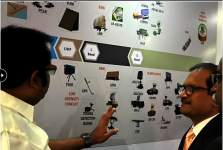What we know so far is that there are 3 missiles under Project Kusha having possible designation - M1, M2 and M3. My guess is:
M1 - LRSAM - 150km
M2 - ERSAM - 250km
M3- XRSAM - 350km
IMO, first possibility can be:
M1 - MRSAM (Indo-Israeli dual pulse missile) + Booster
M2 - MRSAM + Bigger Booster
M3 - MRSAM + Much Bigger Booster
Another possibility can be:
M1 - Dual Pulse Missile (MRSAM) + Booster
M2 - Triple Pulse Missile (New missile under development by DRDO)
M3 - Triple Pulse Missile + Booster
All are just guess work.
M1 - LRSAM - 150km
M2 - ERSAM - 250km
M3- XRSAM - 350km
IMO, first possibility can be:
M1 - MRSAM (Indo-Israeli dual pulse missile) + Booster
M2 - MRSAM + Bigger Booster
M3 - MRSAM + Much Bigger Booster
Another possibility can be:
M1 - Dual Pulse Missile (MRSAM) + Booster
M2 - Triple Pulse Missile (New missile under development by DRDO)
M3 - Triple Pulse Missile + Booster
All are just guess work.





